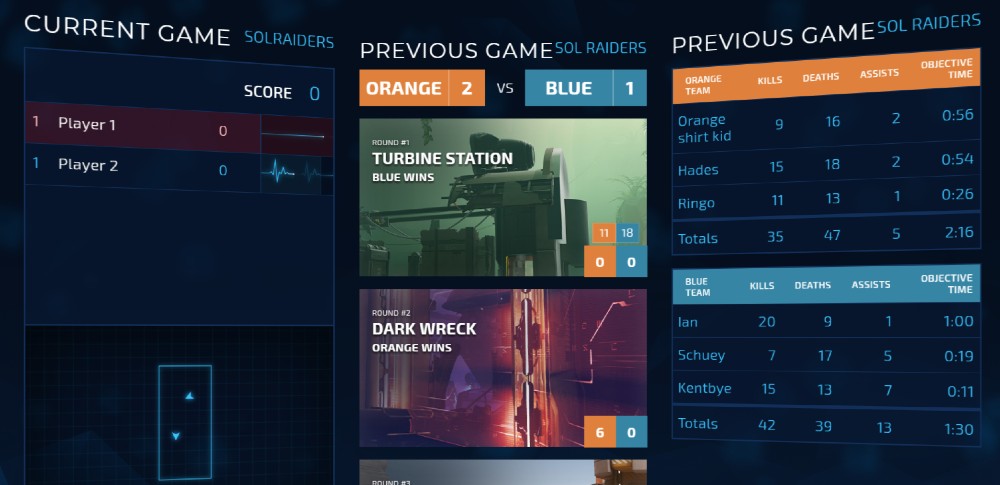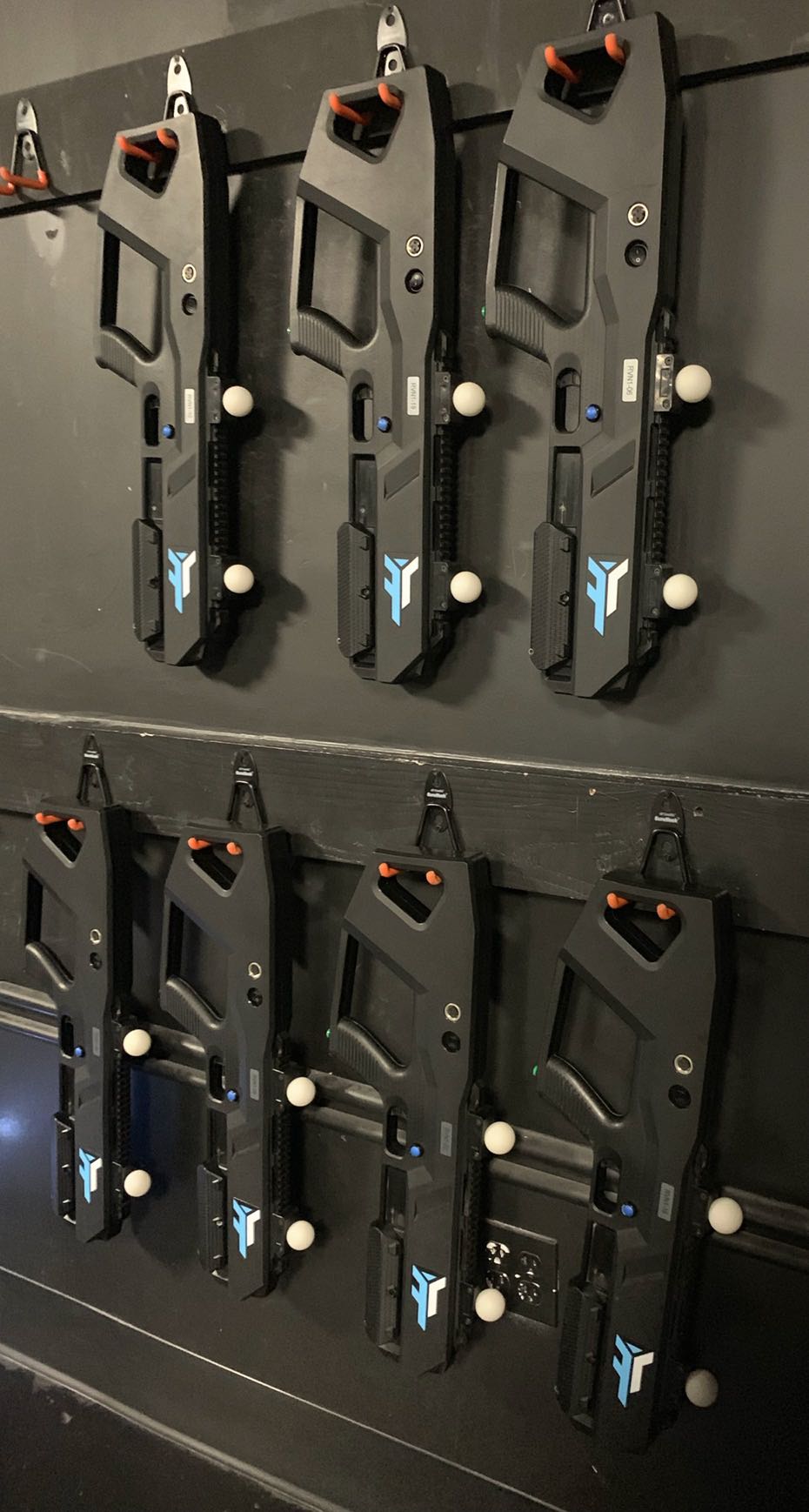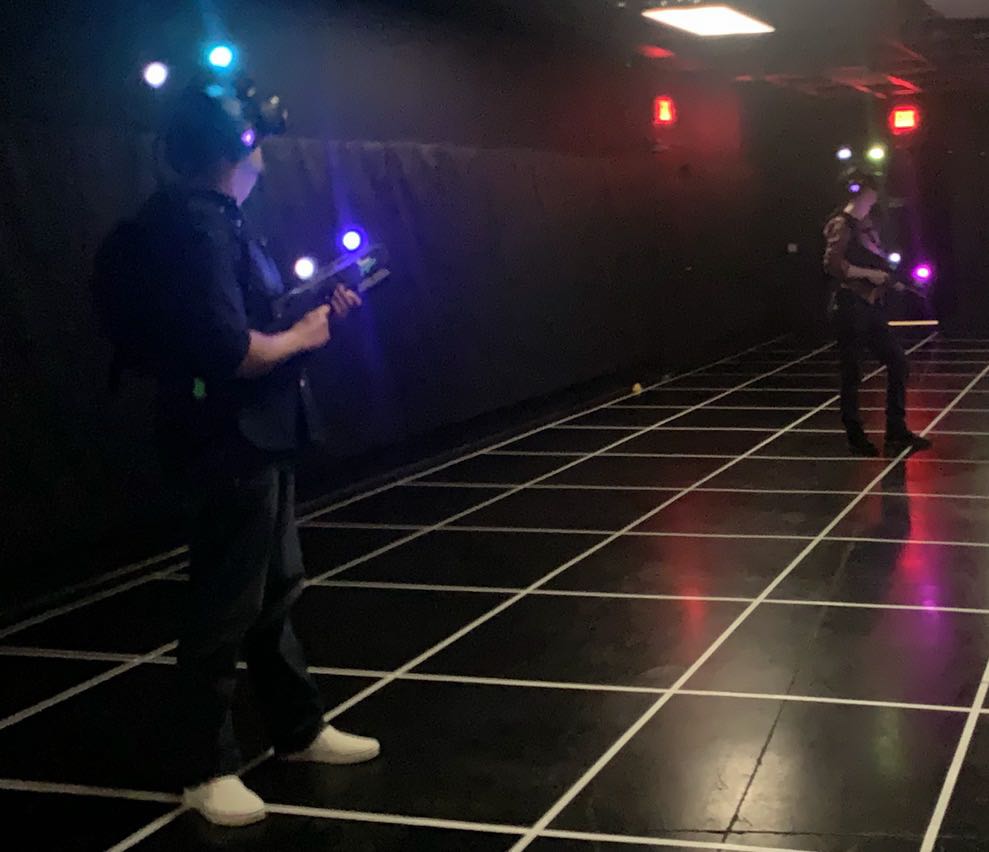Australia-based VR company Zero Latency is debuting its new team-based competitive VR shooter at locations worldwide.
Sol Raiders is opening at 25 locations running Zero Latency’s large-scale VR platform. In the game, two teams of up to four players each face off across three rounds. The company invited me to its Las Vegas location in the MGM Grand to check out the new game.
Tickets are available now.
Hands-on With Sol Raiders

What’s notable immediately about Zero Latency is that they’ve got a custom tracking system following the location of a modified OSVR HDK 2 and their own gun design.

I strapped on their backpack, adjusted the OSVR lenses and entered their Holodeck-like stage for the first time.
While Zero Latency’s stages are large-scale free-roam spaces in the real world, they can be transformed into tight corridors in VR.
In one of the rounds, shooting doors makes them open to sometimes reveal players hidden on the other side. Another area requires you to step onto a lift and then shoot a target to tell it to go to a new area. Snipers attack from nests overhead. Getting shot or having a door close while you’re standing in its way kills your avatar and requires you to walk back to the respawn point.
Both during gameplay and after death players are alerted to the actual locations of other physical players. There’s a radar system during gameplay and the game’s oversized virtual gun helps you to keep a safe distance from other players long before bumping into them.

Sol Raiders is Zero Latency’s 6th game but its first team-based shooter where you fight other humans. Other games from Zero Latency face off against zombies or robots. The company released figures showing growth in the number of playthroughs (and players) at Zero Latency’s VR locations:
Total game plays per year:
2016: 31,175
2017: 216,667
2018: 419,767
Total unique players per year:
2016: 28,028
2017: 153,298
2018: 297,103
With a team-based shooter, the idea is that Zero Latency’s locations could become hubs for competitive combat from more repeat visitors.
Sol Raiders supports English, Spanish and Japanese at launch. I got an email in my pocket with the results of my match the moment it was finished. Though I crushed the competition in overall kills, they beat us in two rounds by achieving the objectives more frequently.
Hardware And Zero Latency’s 2nd Platform
This was my first time testing an OSVR headset since E3 2016 when Razer put me inside an experience without positional tracking. Zero Latency did the hard work of adding its own positional tracking solution and created an entirely different caliber of experience.
Still, I didn’t feel like the tracking, or the OSVR headset’s visuals, were up to par with what I’ve seen with VR-based entertainment from Spaces, The VOID, Dreamscape Immersive or Neurogaming. Zero Latency’s tracking system relies on lights above the headset which seemed to create a bit of sway to my location. As long as I focused on the action and gameplay, though, it wasn’t too distracting.
Zero Latency is working on a second generation hardware platform based around Microsoft’s Windows Mixed Reality platform. They recently announced a partnership with Microsoft, Intel and HP. We’ll be following closely to see if Zero Latency can adapt its games and platform successfully to Microsoft’s headsets and tracking system.

























